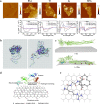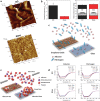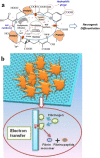Linking graphene-based material physicochemical properties with molecular adsorption, structure and cell fate
- PMID: 36703309
- PMCID: PMC9814659
- DOI: 10.1038/s42004-019-0254-9
Linking graphene-based material physicochemical properties with molecular adsorption, structure and cell fate
Abstract
Graphene, an allotrope of carbon, consists of a single layer of carbon atoms with uniquely tuneable properties. As such, graphene-based materials (GBMs) have gained interest for tissue engineering applications. GBMs are often discussed in the context of how different physicochemical properties affect cell physiology, without explicitly considering the impact of adsorbed proteins. Establishing a relationship between graphene properties, adsorbed proteins, and cell response is necessary as these proteins provide the surface upon which cells attach and grow. This review highlights the molecular adsorption of proteins on different GBMs, protein structural changes, and the connection to cellular function.
© 2020. The Author(s).
Conflict of interest statement
The authors declare no competing interests.
Figures







References
-
- Zhang Y, Wu C, Guo S, Zhang J. Interactions of graphene and graphene oxide with proteins and peptides. Nanotechnol. Rev. 2013;2:27–45. doi: 10.1515/ntrev-2012-0078. - DOI
Publication types
LinkOut - more resources
Full Text Sources
Research Materials

